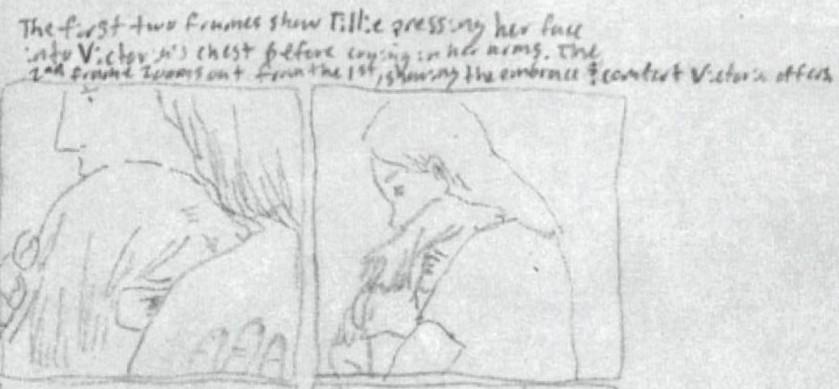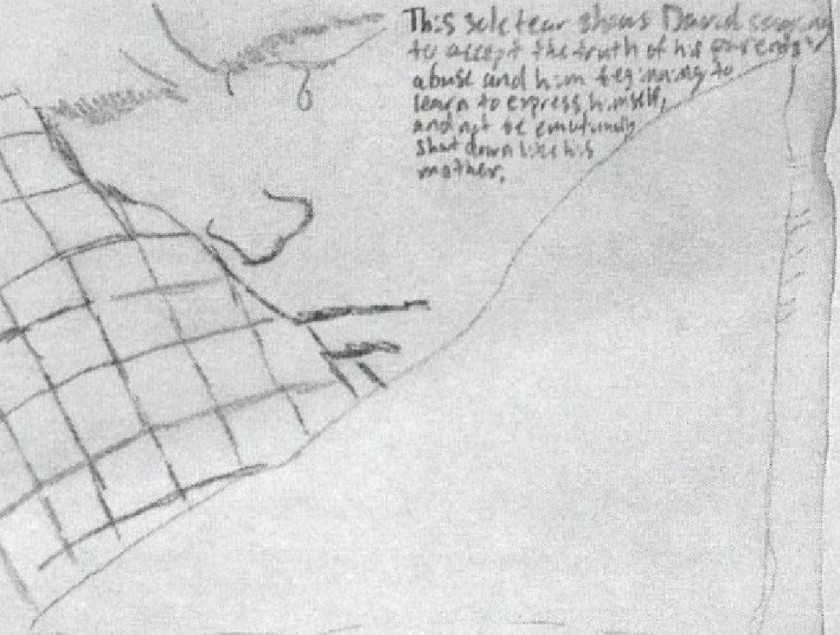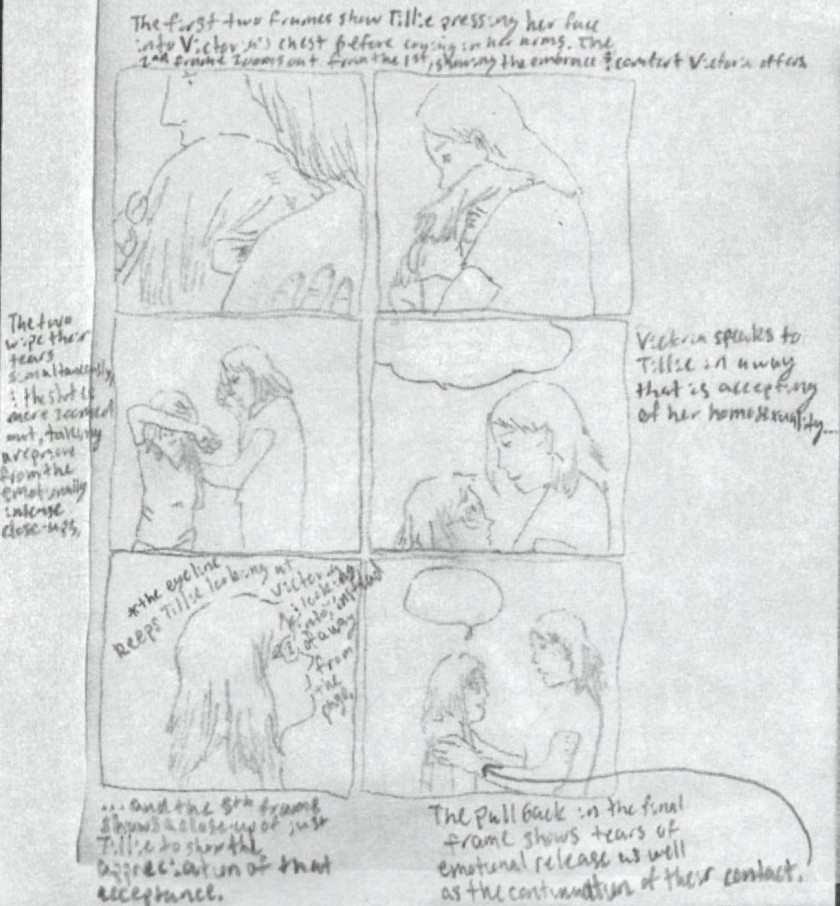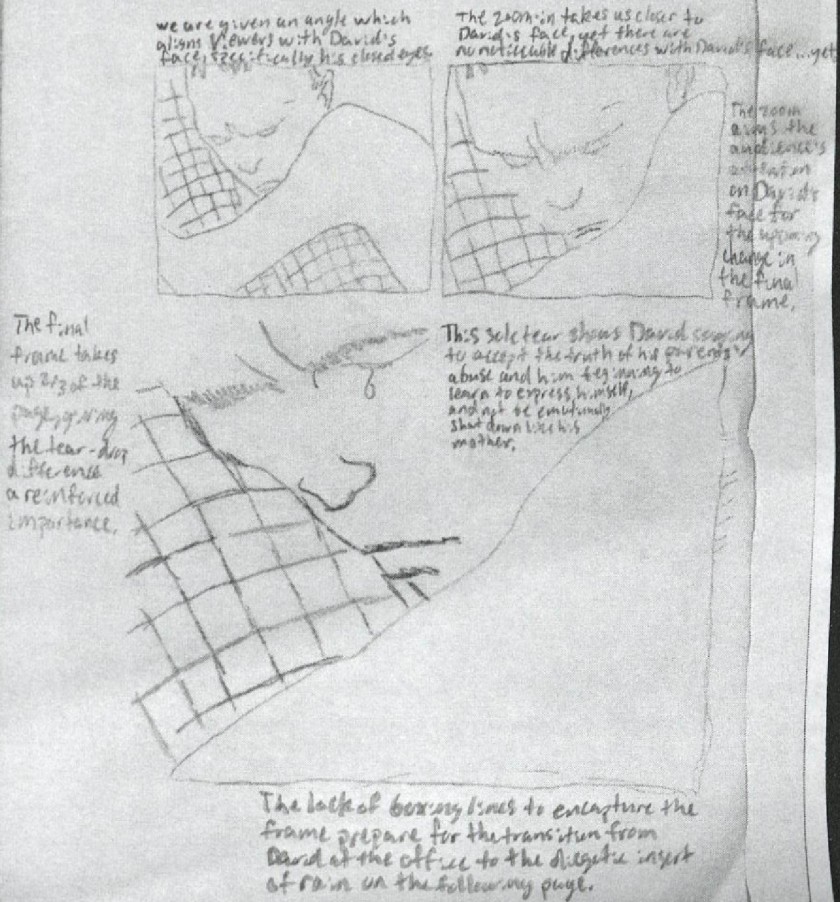Tracing my Reflection
Forming my analyze of the two traced pages that I had annotated was a difficult process to take on. As I attempted to dive deeper into the meaning of certain patterns, I struggled for a little with developing a proper thesis that expanded the ideas I was witnessing on the pages. However, after much contemplation and deeper research on the “secret language of comics” I began to see a clear purpose emerging from the patterns I saw in Stitches and Spinning. After much thought, I knew that the authors’ experimentation with duration and motion and the use of specific images on the pages all lead to an underlying message of the protagonists being controlled by the fear in their lives. Small expanded on the duration of a moment to emphasize the specific detail of the fetus in order to relate his growth to an unknown terror that was beginning to control his life. He used his images to highlight the elements and expressions that lead to this conclusion. In contrast, Walden demonstrated the layering of motion and use of void images to present the idea to the audience that she is merely going through the motions of figure skating because of the fear she has of a life without it.
The process of annotating my traced pages allowed me to obtain a better understanding of the details I was privy to and those that were intentionally left out. By annotating these works I could take a closer look at the meanings behind each frame, angle, and perspective that the authors were sharing with us through their drawings. Obtaining this deeper understanding made the inductive essay much more manageable to form. I changed my writing process by jumping straight into my observations and arguments while considering what these patterns were really hinting to in the back of my mind. It took me a pretty long time to write this three paragraphs because I continued to stop and take multiple steps back in order to recognize the bigger picture at hand.
Ultimately, this assignment definitely provided me with an understanding of comics that I had never gotten before. I can now confidently say that Stitches and Spinning are much clearer after writing my analyze and diving into the patterns used by these authors. My biggest insight from this project is the hidden layer of deep emotion that drives both narratives. It had been clear that the ideas in these books were much deeper than just the surface, but being able to recognize the patterns set in place to demonstrate the unspoken feelings of the characters was a very pleasing thing for me to discover. Both the assignment prompt and my analyze of the annotated pages can be useful for more insight into a more meaningful understanding of these comics.





